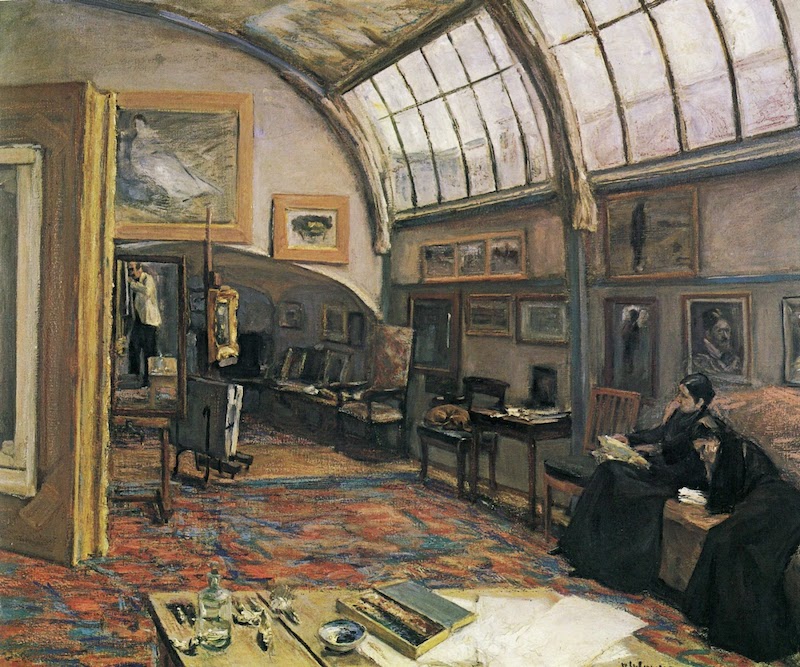That said, his works that popped up in Internet searches were of decidedly mixed quality. To my way of thinking, his portraits of women were his best, street scenes his worst. Below are some examples.
La preghiera della sera a Bisanzio - c.1885
"Byzantine Evening Prayer." This won a silver medal at a Palermo salon and King Umberto bought it in 1886.
Teodora - 1887
Another Academic subject, also not fully with Academic finish.
Interno con figura
"Interior with Figure" -- one of his better paintings of pretty women.
Woman in profile
Ritratto della moglie del pittore Rossano
Portrait of the artist Federigo Rossano's wife.
Ritratto della moglie del pittore Rossano - study
Given its sketchy quality, I prefer it to the slightly less-sketchy final work.
Ritratto di donna - 1922
A fairly late painting. Compare it to the final image below, painted at about the same time.
Paris scene by Café de la Paix
He spent time in Paris studying with Jean-Léon Gérôme and probably visited on later occasions. This is undated, but the view might be from around 1890.
Strada Parigi
Paris Street. It looks like the Boulevard Saint-Michel, the Pantheon in the distance. Others, such as Édouard Cortès, did much better jobs of this kind.
Boulevard parigino - 1921
Paris Boulevard. The date below De Sanctis' signature appears to be 1921. But the traffic on the Champs-Élysées shown here is 1890 vintage. My conclusion is that he cranked out a number of nostalgic Paris street scenes in order to earn some money.













%20-%201928.jpg)






%20-c.1872.jpg)


















